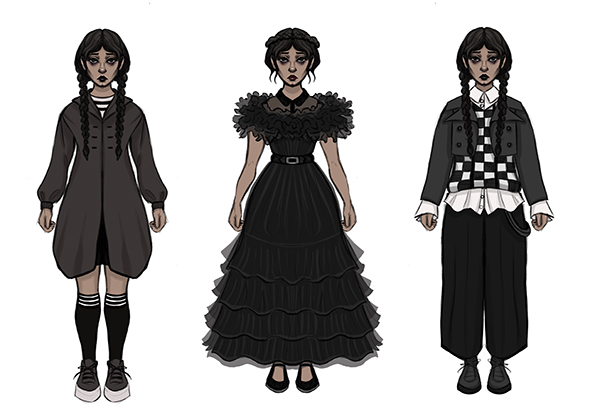
Designing the perfect costume for your character is so important!
Your character’s outfit is one of the most effective ways to communicate information about their personality to your audience. Everything from their hairstyle to the color of their shoes can have an impact on how they will be perceived!
This technique is covered in some of our awesome character illustration courses, which we will discuss later on. A great example of effective costume design can be seen in Netflix’s incredibly popular TV series, ‘Wednesday,’ a modern take on ‘The Addams Family.’
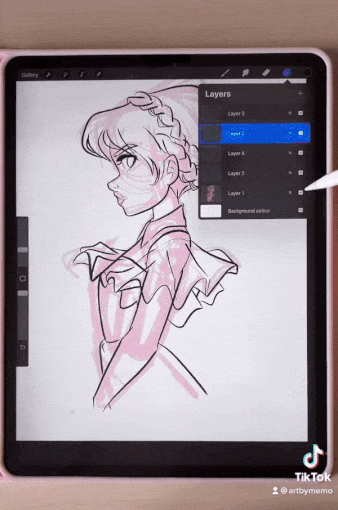
The story follows the journey of the family’s austere eldest child, Wednesday, as she endeavors to uncover mysterious crimes occurring at her school.
Her monochromatic wardrobe throughout the show does a fantastic job of conveying her dark and harsh disposition throughout the series. Even some of our amazing artists here at 21 Draw have posted their own takes on Wednesday’s detailed gothic outfits!
Are you ready to learn how to draw clothing?
In this article we will be covering how to draw clothing from a reference, draw folds in different fabrics and bring personality into your character’s outfits!
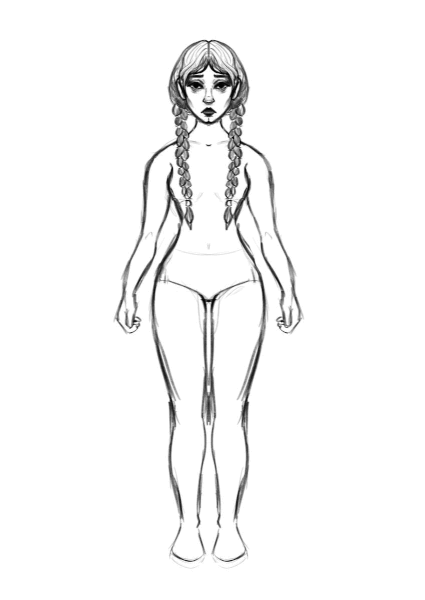
One of the easiest ways to test out a range of different costumes on your character is to create a mannequin of the human figure, or more specifically, your character, for you to draw the costume over.
This makes the process a lot faster as you won’t have to re-draw the character for every single costume. Your mannequin should show a rough silhouette of the body, as well as your character’s facial features and hair.
Think of the sticker dress-up games aimed at children, in which they stick different clothes on an image of their favorite character/doll.
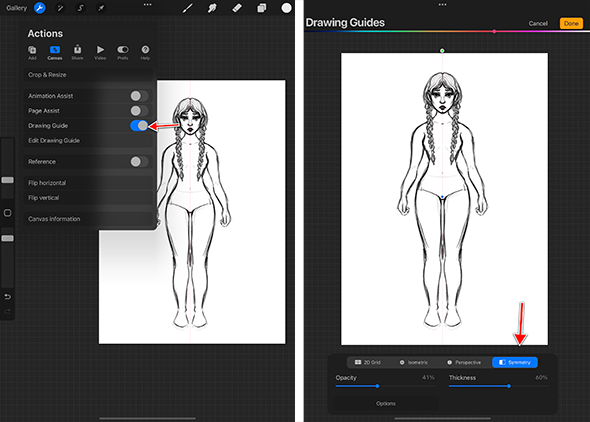
If you need your character to be perfectly symmetrical for a concept design model sheet, you can use the symmetry tool to make things easier!
To access this tool in Procreate, simply go to the Actions menu, click on Canvas, turn on Drawing Guide, and then select Edit Drawing Guide.
You should see Symmetry as an option at the bottom of the tool window, select this and start drawing! NOTE: When drawing folds, the fabric may not look very natural in symmetry mode
If this happens to your, you can simply turn of Symmetry for this portion of the outfit.
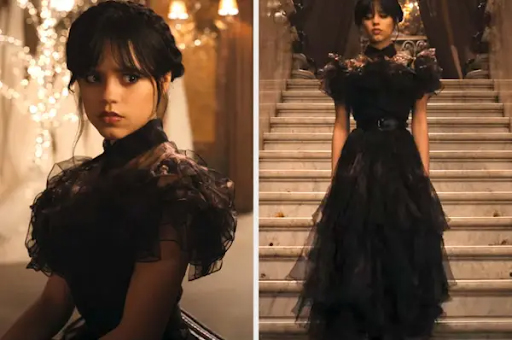
One of the best ways to improve your costume illustration skills is to use references! For example, you might be inspired by a movie or a TV series like ‘Wednesday.’
By using references, you will start to gain a greater understanding of how clothes typically sit on the human body, as well as creating a repertoire of different designs in your mind. For these illustrations, I used screen captures from the Netflix series itself as my references.
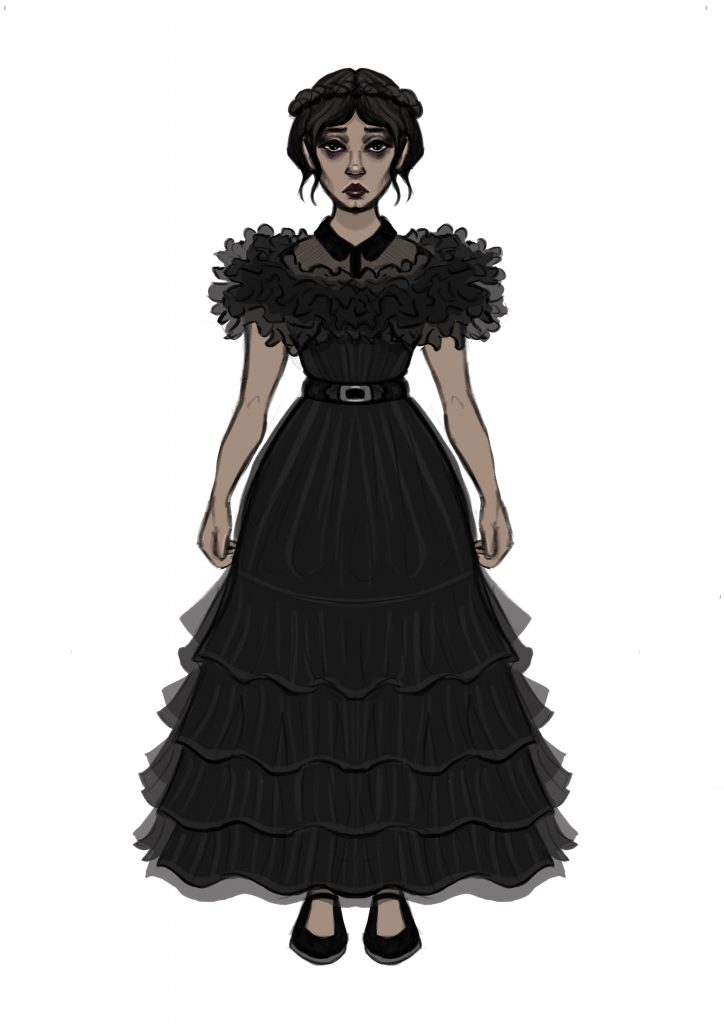
The type of fabric an item of clothing is made of can entirely change the way it is illustrated. Some fabrics will have harsh, square lines while others will look more organic and curved. It is important to understand how different fabrics act when drawing folds. For example:
When it comes to drawing clothing folds, keep them simple, focusing on areas where the folds are more prominent. For smaller folds, use light line-work.
It is important to identify where an item of clothing drapes from as this will affect the direction you draw wrinkles, in most cases this will be the shoulder. Shading folds will also help add depth to your character’s outfits.

To show you how you might illustrate some of these fabrics, here is a speed-painting clip from one of my ‘Wednesday’ outfit sketches.
Notice that I start out with my symmetrical mannequin before moving into the costume. As you can see in the final sketch, her cotton undershirt and pant legs have some triangular folds to communicate its light, flowy texture, while her cropped jacket is made up of entirely hard linework.
As mentioned earlier, how you dress your character is going to communicate a lot about their personality.
Randy Bishop does a great job of describing this principle in-depth lesson in his course, “Fundamentals of Character Design.”
As you can see with Wednesday’s gothic outfits, her character is humorless, severe, and interested in all things spooky. When compared with her bubbly, cheerful roommate, Enid, there is a stark contrast between the two characters’ costumes.
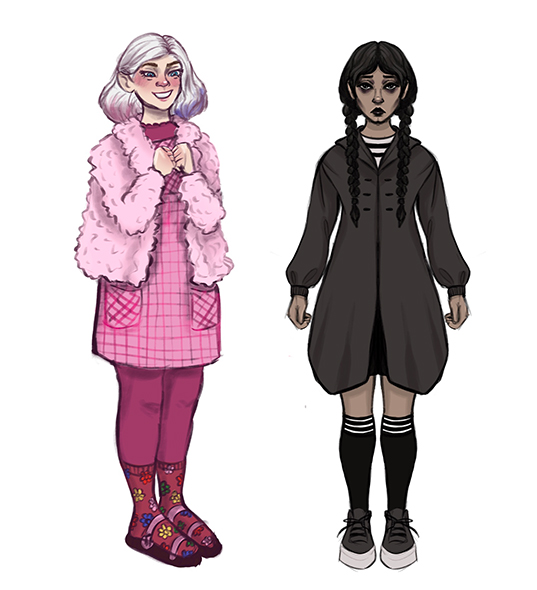
Where Wednesday’s outfits are all harsh linework and gray-scale colors, Enid’s outfits are frilly, fluffy, and colorful. If you want to learn more about using different color palettes in your work, I recommend Meike Schneider’s course, “Drawing a Female Character.”
It is a great place to start if you are new to using curated color schemes in your costume designs!
Are you ready to start sketching costumes?
Now that you know how to draw clothes, you can create all kinds of different outfits for your characters! Want even more inspiration?
Check out our top lessons on clothes drawing in “Fundamentals of Drawing“ by Maria Malandrino and “Digital Illustration for Beginners“ by Laia López.
Rhea is an Australian concept artist who is currently studying at Griffith University. She is passionate about spreading her love of art to others.